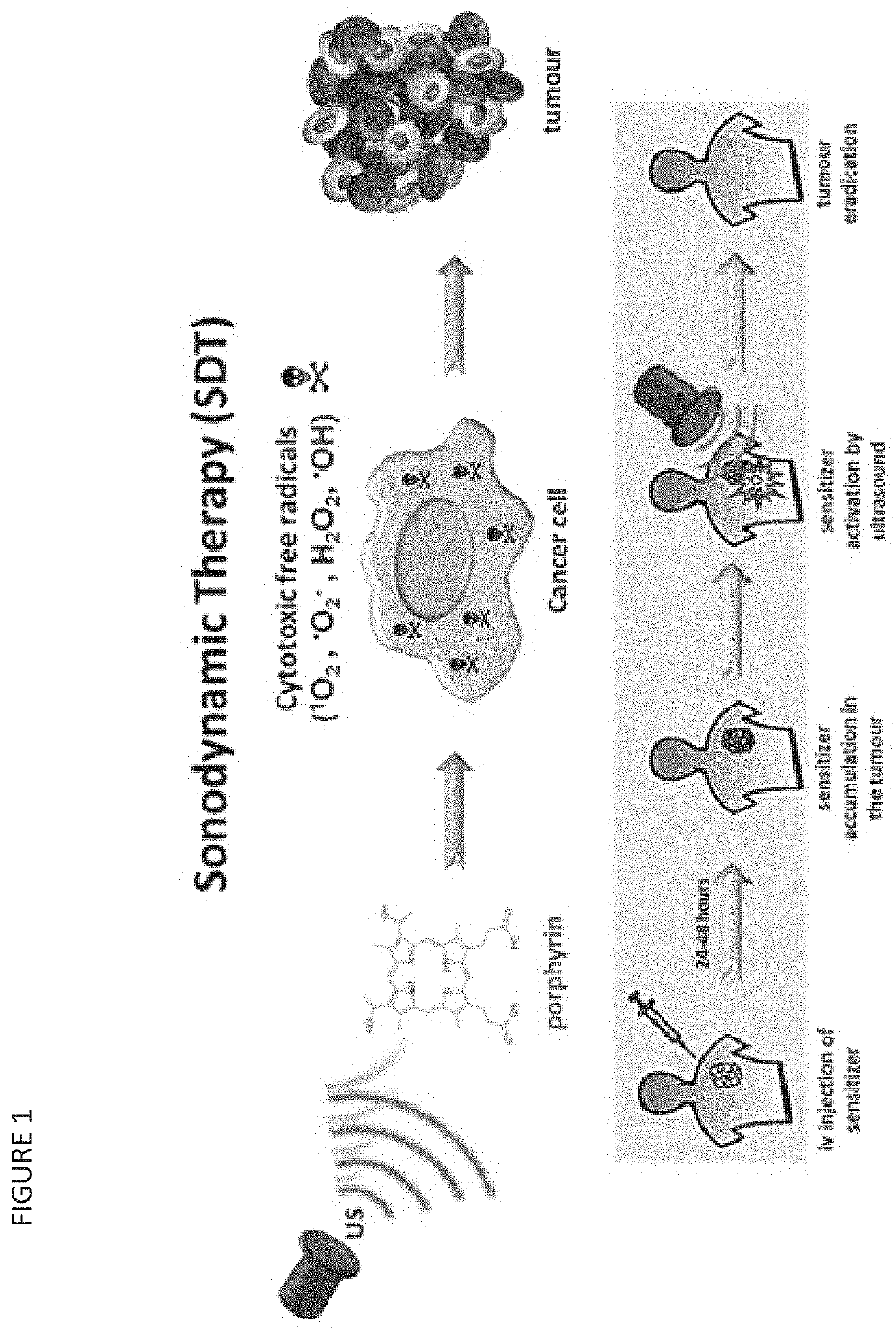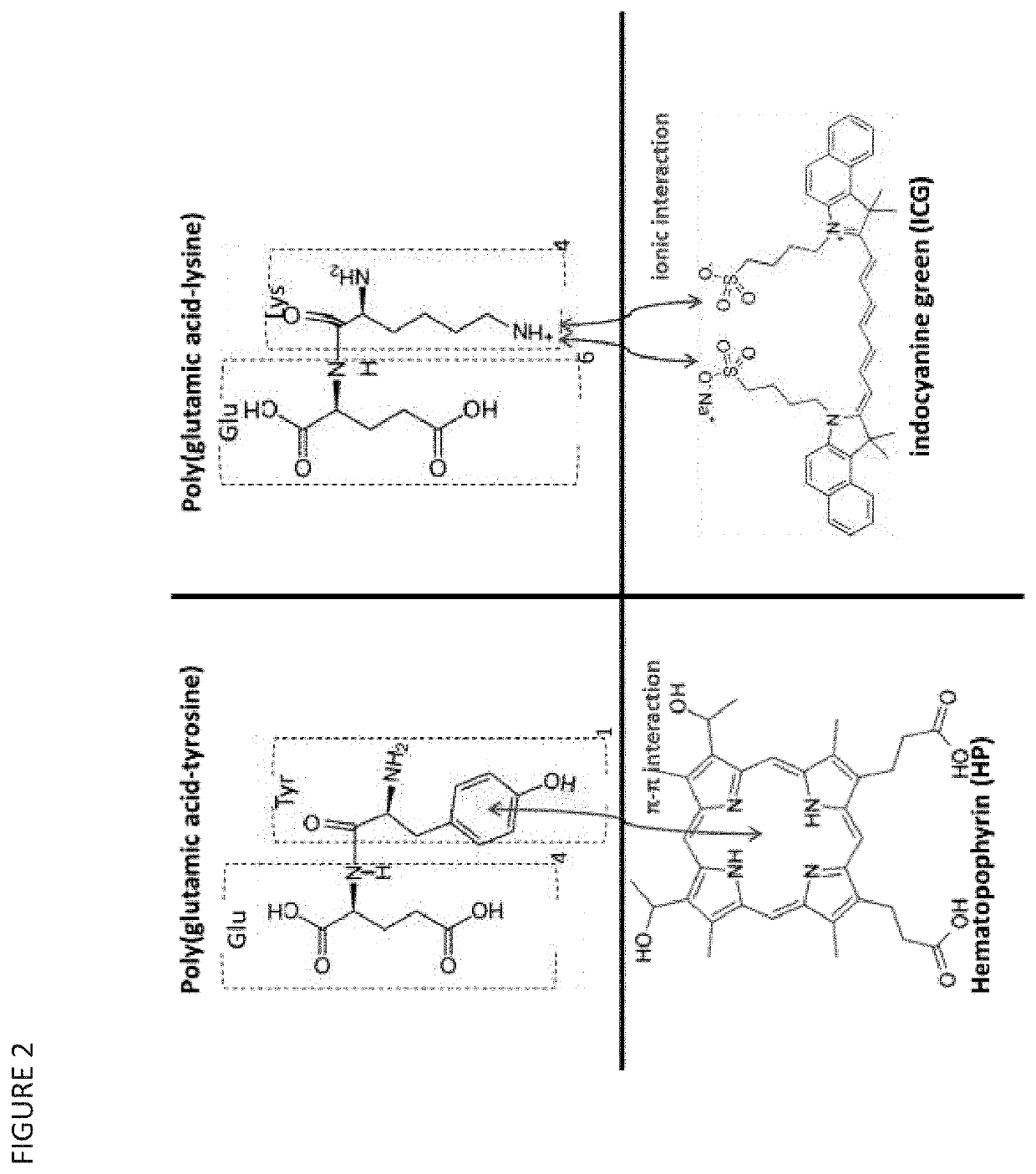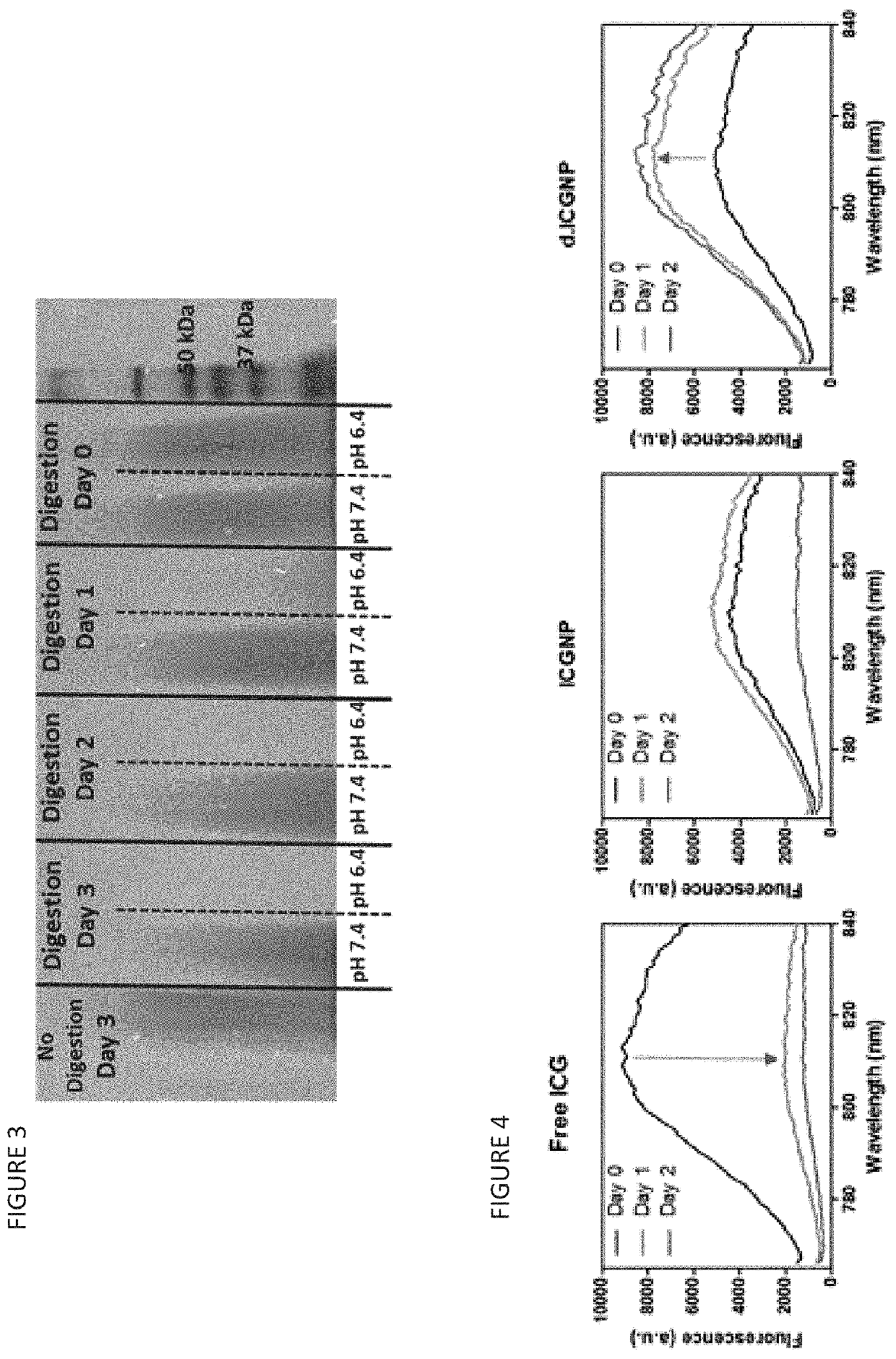Nanoparticles for Cancer Therapy and Diagnosis
- Summary
- Abstract
- Description
- Claims
- Application Information
AI Technical Summary
Benefits of technology
Problems solved by technology
Method used
Image
Examples
example 1
ation with Lipid 1,2-Dioleoyl-sn-glycero-3-phosphoethanolamine, for ICG-carrying Nanoparticles with Applications in Near-infrared Imaging
Method
[0219]Blockage of amine terminal groups of PGA: 10 mg PGA salt (MW: 50-100 kDa) were dissolved in 2 mL of 0.1M sodium phosphate buffer (pH 7.3). 2.5 mg of Sulfo-NHS acetate were dissolved in 200 uL 0.1M sodium phosphate buffer and this was added to the PGA solution, under constant stirring. The reaction was allowed to run under stirring at room temperature for 1 hr. The solution was dialysed for 24 hrs against de-ionised water and then freeze-dried for 24 hrs.
[0220]Carboxyl group substitution (1:50) with lipid molecule: 3 mg sulfo-NHS and 4 mg EDC were dissolved in 5 mL PGA 2 mg / mL solution in water. The resulting solution was heated at 80° C. in a sonicating bath and a 5 mL 1,2-Dioleoyl-sn-glycero-3-phosphoethanolamine 140 μg / mL solution in water (also at 80° C.) was added drop-wise. The reaction was allowed to take place at 70° C. for 3 hrs...
example 2
ce of the ICG-carrying Nanoparticles Formed Using the Lipid-derivatised PGA
Method
[0223]The ICG-carrying nanoparticles were prepared as described in example 1, using PGA that was derivatised with 1,2-dioleoyl-sn-glycero-3-phosphoethanolamine, by 1:50 substitution of PGA side-chain carboxyl groups (as described in Example 1)
Performance of Nanoparticles
Optical Properties of the ICG-carrying Nanoparticles Formed with the Lipid-derivatised PGA
[0224]For time-depended fluorescence emission characterization, phosphate-buffered saline (PBS) solutions / suspensions containing free ICG, or ICG nanoparticles in the absence (ICGNP) or the presence (d.ICGNP) of cathepsin B (0.6 units / mL) were stored in an orbital incubator at 37° C., protected from light, for 2 days. The equivalent ICG concentration in all systems was 6 μg / mL. Fluorescence emission spectra of these systems were acquired over the course of 48 h. The excitation wavelength of 740 nm was used to obtain the fluorescence spectra. For the...
example 3
r of Poly Glutamic Acid with Tyrosine, for Hematoporphyrin (HP)-carrying Nanoparticles with Applications in Sonodynamic Therapy
Method
[0231]10 mg of either poly-I-glutamic acid sodium salt (PGA) (10 mg) (MW: 50-100 kDa) or poly-L-glutamic acid-tyrosine co-polymer 4:1 (PGATyr) (MW: 20-50 kDa) was mixed with 5 mg HP and dissolved in 10 mL DMSO. The resulting mixture was added drop-wise to a 5 mL polyvinyl alcohol solution (PVA, MW: 124 kDa) 0.5 mg / mL and the mixture was left under constant stirring for 1 hr. The mixture was then dialysed in membrane tubing (MWCO: 8 kDa) against water for 24 hr. Subsequently, the suspension was ultracentrifuged for 90 min at 38,000 g, at 12° C. The precipitated pellet was suspended in 3 mL deionised water and probe-sonicated for 3 min to break down any aggregates. Second dialysis was performed to remove any free HP remaining, for 12 hr. The solution was filter-sterilised using a 0.2 μm-pore filter and was snap-frozen followed by freeze-drying for 24 hrs...
PUM
| Property | Measurement | Unit |
|---|---|---|
| Mass | aaaaa | aaaaa |
| Mass | aaaaa | aaaaa |
| Mass | aaaaa | aaaaa |
Abstract
Description
Claims
Application Information
 Login to View More
Login to View More - R&D
- Intellectual Property
- Life Sciences
- Materials
- Tech Scout
- Unparalleled Data Quality
- Higher Quality Content
- 60% Fewer Hallucinations
Browse by: Latest US Patents, China's latest patents, Technical Efficacy Thesaurus, Application Domain, Technology Topic, Popular Technical Reports.
© 2025 PatSnap. All rights reserved.Legal|Privacy policy|Modern Slavery Act Transparency Statement|Sitemap|About US| Contact US: help@patsnap.com



